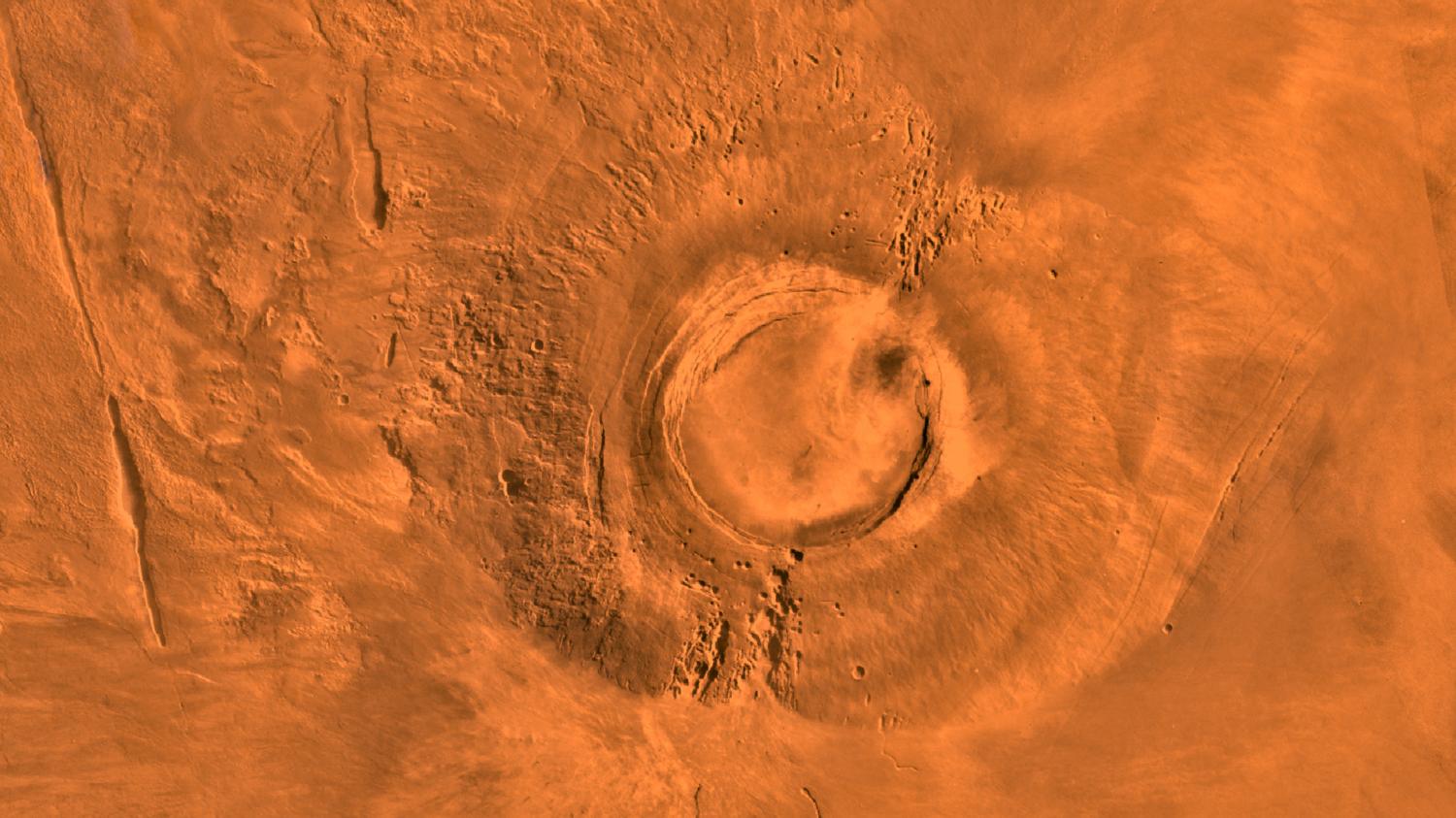Mars volcanic activity clues for ancient life, revealing mesmerising unbelievable Martian secrets. In a groundbreaking study published on Dec. 15 in the Journal of Geophysical Research: Planets, scientists from the University of Arizona’s Lunar and Planetary Laboratory have meticulously examined data from the Mars Express orbiter. Their findings not only challenge preconceptions about Mars as a geologically dormant world but also point to intriguing connections between the planet’s volcanic history and the possibility of ancient microbial life. Join us on a journey beyond the surface of the Red Planet as we delve into the captivating revelations brought to light by the Mars Express orbiter.
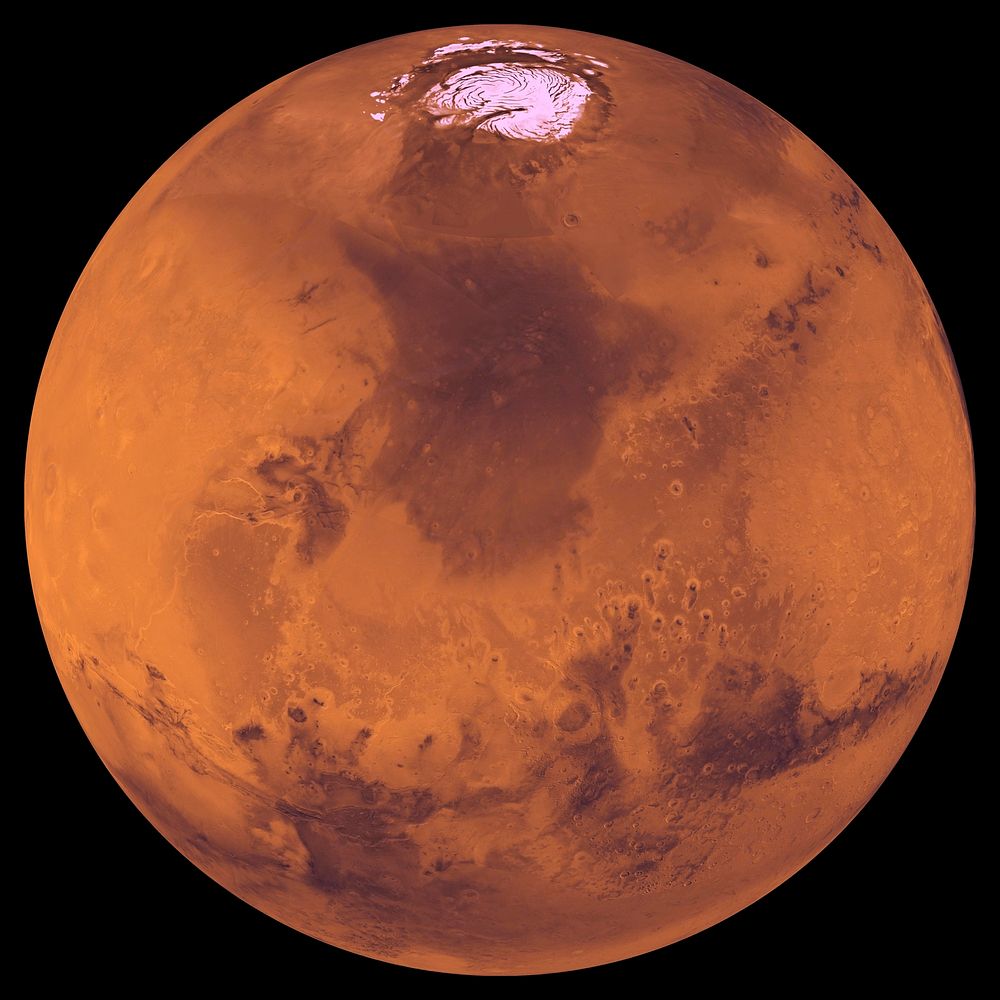
Mars: A Visionary Imaginary World Out of Space
Mars, long relegated to the status of a “dead” planet, is now at the forefront of scientific exploration challenging preconceived notions. Scientists Joana Voigt and Christopher Hamilton have spearheaded a study that redefines our understanding of Mars, utilizing spacecraft images and ground-penetrating radar data to unveil the intricate details of its geological features. This marks a paradigm shift, opening new avenues of inquiry into the red planet’s mysterious terrain.
The study, a collaborative effort led by the University of Arizona’s Lunar and Planetary Laboratory, delves into Mars’ geological intricacies, transcending the conventional narrative of it being a dormant celestial body. By employing state-of-the-art spacecraft images and ground-penetrating radar data, the research team, as reported by Space.com, meticulously constructed 3D reconstructions of lava flows in Elysium Planitia.
The groundbreaking nature of this study lies in its challenge to the prevailing perception of Mars as a “dead” planet. By focusing on Elysium Planitia, a region on Mars equivalent in size to Alaska, the researchers have peeled back the layers of mystery surrounding the red planet’s geological history. This fresh perspective has implications not only for our comprehension of Mars but also for how we conceptualize planets beyond Earth.
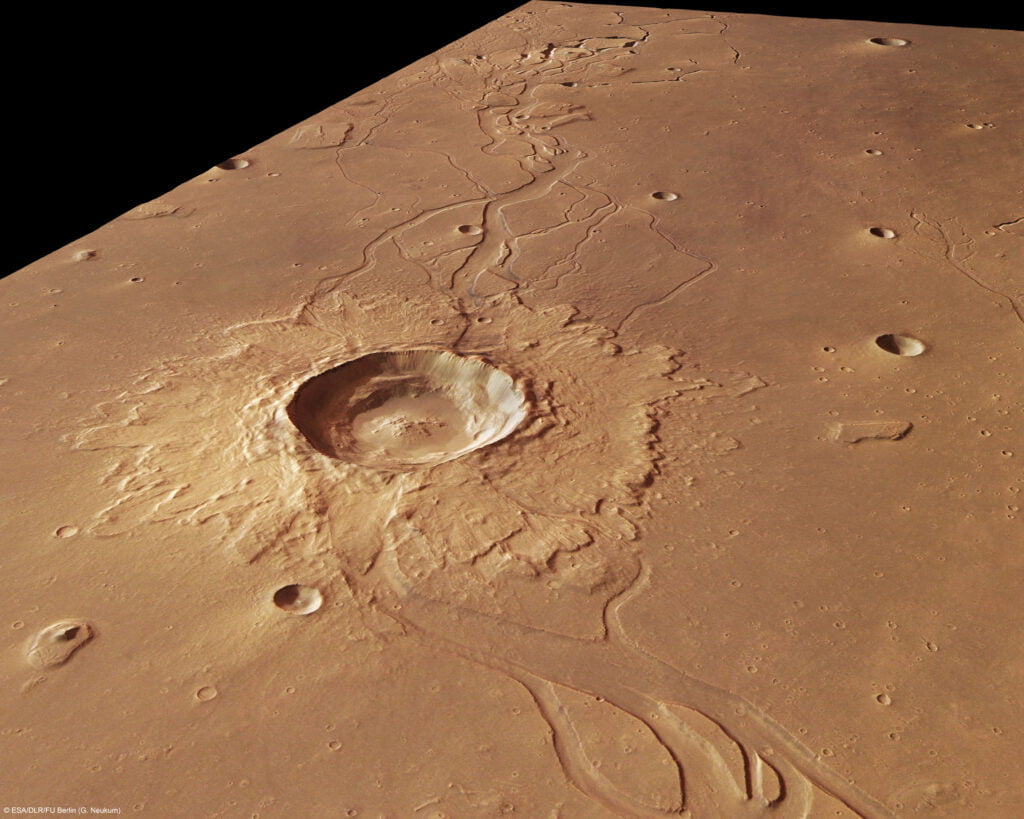
Volcanic Chronicles of Mars: Recent Surprises Unearthed
In a revelation that reshapes our understanding of Mars’ geological history, a research team has unearthed a staggering 40 volcanic events on the Red Planet. The most significant eruption, a colossal event, poured an astonishing 1,000 cubic miles of basalt into the Martian valley known as Athabasca Valles. Astonishingly, these volcanic activities might be more recent than previously thought, potentially placing Elysium Planitia in an ongoing state of volcanic activity.
The research, conducted by scientists from the University of Arizona’s Lunar and Planetary Laboratory, utilized data from the Mars Express orbiter. This comprehensive analysis not only unveils the sheer magnitude of volcanic events but also challenges the perception of Mars as a dormant world.
The focal point of these discoveries is Elysium Planitia, an area once deemed unremarkable. The recent findings turn this notion on its head, suggesting that beneath its surface lies a dynamic environment shaped by volcanic forces. The revelation that these volcanic activities may have occurred as recently as one million years ago adds a layer of intrigue, raising the possibility that Mars’ volcanic heartbeat is still palpable today.
These groundbreaking insights, published in the Journal of Geophysical Research: Planets, affirm that Mars continues to be a celestial body of uncharted surprises. The ongoing volcanic activity in Elysium Planitia serves as a reminder that the Red Planet, with its vast landscapes and hidden secrets, is a scientific canvas waiting to be explored.
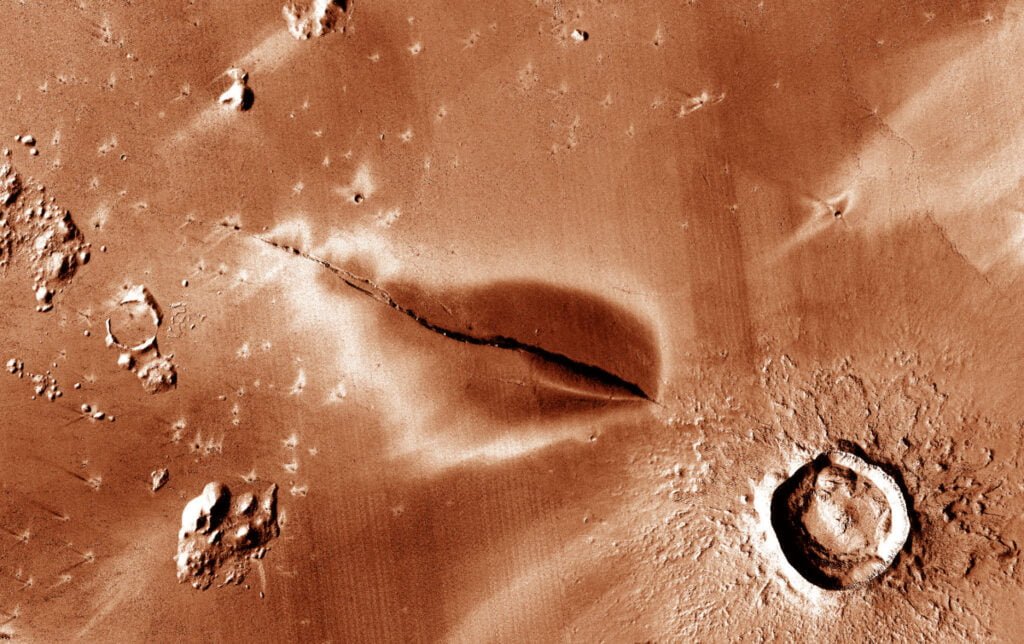
In-Depth Analysis: Revealing Mars’ Geological Structure
In a quest to demystify Mars’ geological composition, a dedicated research team has undertaken a meticulous analysis, revealing the Red Planet’s intricate structure. Employing a collaborative approach, the scientists harnessed data from a suite of cutting-edge spacecraft instruments, including the Context camera, HiRISE camera, Mars Orbiter Laser Altimeter, and subsurface radar measurements from NASA’s Shallow Radar (SHARAD) probe.
This in-depth analysis aimed to construct a comprehensive view of Mars’ recent volcanic activity, offering a glimpse into the planet’s geological evolution. The Context camera and HiRISE camera, stationed on NASA’s Mars Reconnaissance Orbiter, captured detailed images of the Martian surface, providing a crucial visual dataset for the study. The Mars Orbiter Laser Altimeter, part of NASA’s Mars Global Surveyor, contributed precise elevation data, adding a vertical dimension to the analysis.
A key player in this investigative ensemble was NASA’s Shallow Radar (SHARAD) probe, delving beneath the Martian surface to collect subsurface radar measurements. This collaborative synergy allowed the team to weave together a 3D model, offering unprecedented insights into Mars’ geological past. Remarkably, the model extends its reach up to 460 feet below the Martian surface, providing a nuanced understanding of the planet’s hidden intricacies.
Published in the Journal of Geophysical Research: Planets, these findings mark a significant leap in our understanding of Mars’ geological composition. The collaborative use of state-of-the-art instruments underscores the multidimensional nature of this exploration, revealing layers of information that were previously inaccessible. The 3D model is a virtual window, peering beneath the Martian surface and shedding light on the planet’s geological history.
In essence, this comprehensive analysis is a testament to the power of collaborative scientific research, leveraging technological advancements to decode the mysteries of our neighbouring planet. As Mars continues to captivate our scientific curiosity, these revelations pave the way for future explorations and a deeper understanding of the celestial body’s complex geological tapestry.
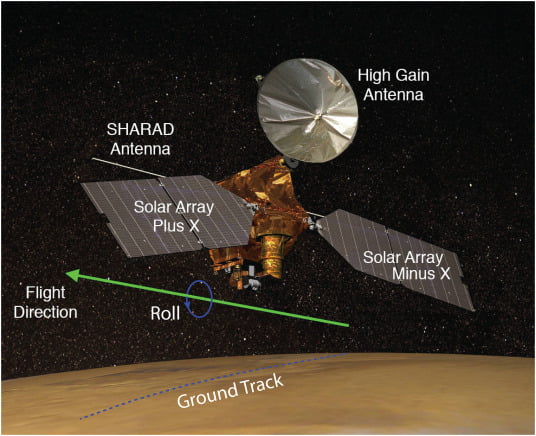
Interplay with Ancient Life: Mars’ Hydrothermal Possibilities
In a pivotal revelation, a scientific study exploring Mars’ geological intricacies has unearthed potential links between the planet’s volcanic activity and the existence of ancient microbial life. The research, led by scientists from the University of Arizona’s Lunar and Planetary Laboratory, goes beyond conventional geology, delving into the role of water in the interplay between lava and the Martian surface.
Water, a fundamental component of life as we understand it, emerges as a key player in Mars’ geological dynamics. The research team, as reported by Space.com, has identified compelling evidence of steam explosions, indicative of interactions between water or water ice and lava. These interactions create hydrothermal environments, reminiscent of Earth’s seabed fissures that are known to support a diverse array of life forms.
The findings expand our understanding of Mars beyond its barren surface, suggesting the potential for ancient microbial life to have thrived in hydrothermal environments. This revelation adds a layer of complexity to our perception of Mars, transforming it from a cold and desolate planet to a world that, in its distant past, may have hosted conditions suitable for life.
As the scientific community unravels the implications of these discoveries, the focus shifts from Mars’ surface features to the potential subsurface environments. Hydrothermal possibilities on Mars raise intriguing questions about the planet’s past habitability and offer a tantalizing glimpse into the quest for signs of ancient life on our neighbouring celestial body.
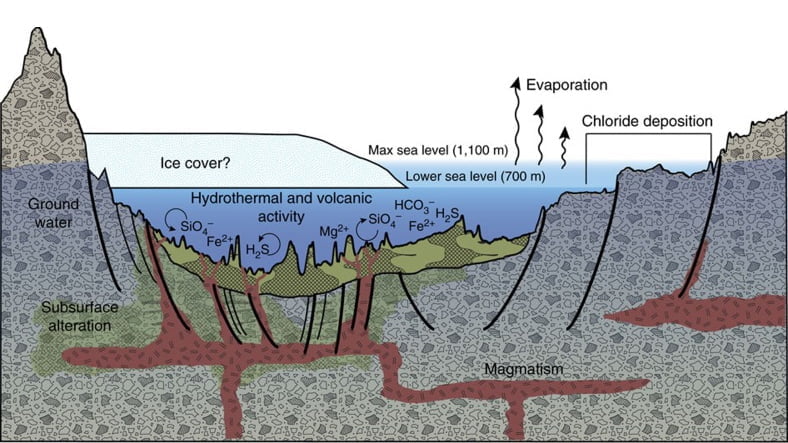
Paving the Way for Mars Exploration: Elysium Planitia’s Strategic Role
In a groundbreaking study, scientists from the University of Arizona’s Lunar and Planetary Laboratory have uncovered findings that bear immense significance for the future of Mars exploration. The focus is on Elysium Planitia, a region with unique characteristics that could pave the way for upcoming manned missions to the Red Planet.
Elysium Planitia, often overlooked, emerges as a strategic player in Mars exploration due to its favourable landing conditions. The research team, as reported by Space.com, indicates that this region could potentially provide essential resources for future astronauts. These resources include not only a suitable surface for landing but also the prospect of valuable water sources—crucial for both consumption and fuel generation.
As humanity looks toward venturing beyond Earth, Elysium Planitia becomes a focal point for potential missions to Mars. Its accessibility and resource-rich nature make it an ideal candidate for exploration and potential habitation. The findings underscore the strategic importance of this Martian region, shaping the trajectory of future missions and the feasibility of sustained human presence on Mars.
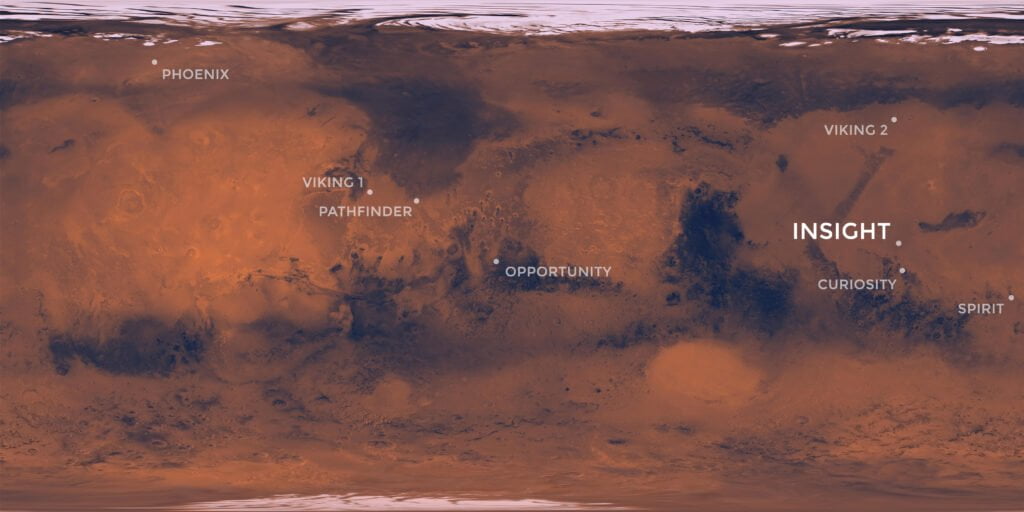
Conclusion: Mars Volcanic Activity Clues for Ancient Life
In the relentless pursuit of revealing Mars’ mysteries, the dedicated research team remains committed to delving deeper into the data and extending their exploration to other volcanically active regions on the Red Planet. The culmination of their efforts marks the opening of a new chapter in our comprehension of Mars’ geological dynamics and its potential for habitability.
Once dismissed as mundane, Elysium Planitia emerges as an unexpected reservoir of invaluable insights, underscoring that Mars, despite its characteristic red hue, is far more than meets the eye. The revelations from this study stand as a testament to the untapped wealth of knowledge awaiting discovery through forthcoming research endeavours.
Credit: The insights presented in this article are based on a study published on Dec. 15 in the Journal of Geophysical Research: Planets. The original findings and analysis can be explored further at Space.com. Reporting and research contributions are credited to the University of Arizona’s Lunar and Planetary Laboratory, with key figures including scientists Joana Voigt and Christopher Hamilton.
For more latest trendy news like this visit our Latest News page. To contact us please visit our Contact Us page located in the footer menu. For various needy offers and deals of the day you can check out our Best Deals page. To know more about us visit the About Us page in the footer menu. You can also read our Disclaimer, Affiliate Disclosure and FAQs page located in the footer menu. You can also find the Webstory Page in the footer menu to see our latest published web stories.

